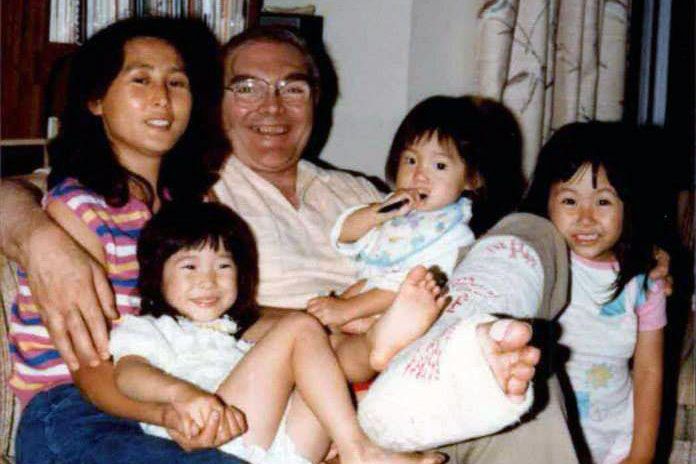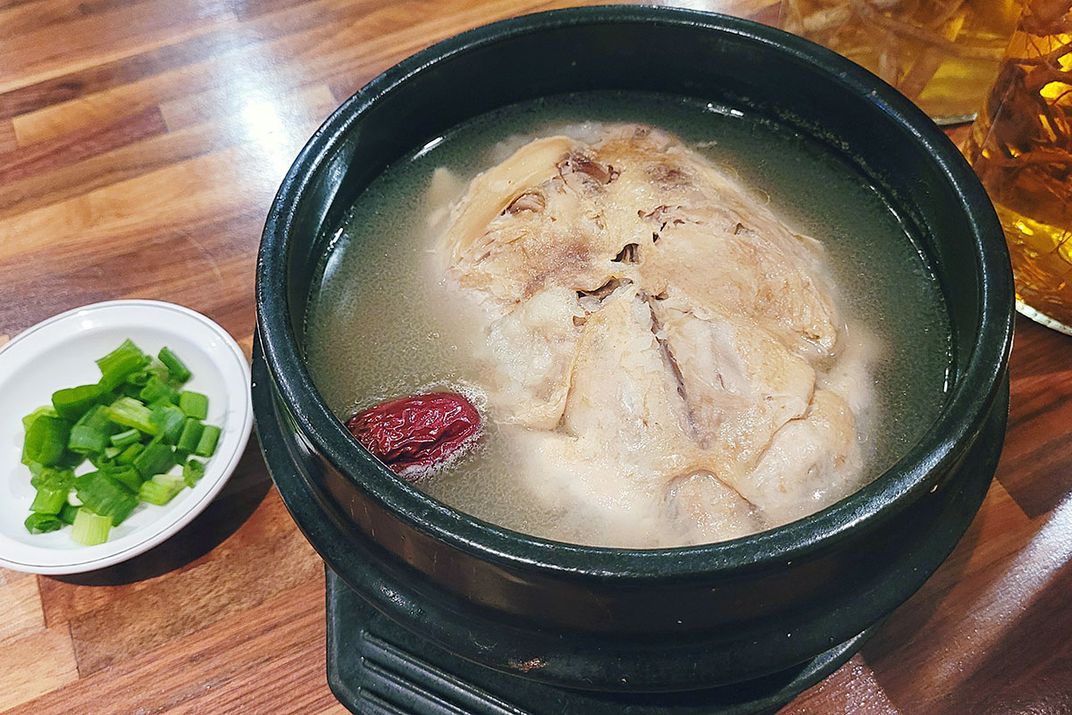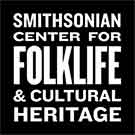SMITHSONIAN CENTER FOR FOLKLIFE & CULTURAL HERITAGE
How Ginseng Connects Me to the Roots of My Korean American Community
Although I grew up in the Northern Virginia area, with the third largest Korean American population in the United States, I always felt foreign, even in my own neighborhood. Adults butchered my name “Dahye” until I finally changed it to “Grace,” just to get through morning roll call.
/https://tf-cmsv2-smithsonianmag-media.s3.amazonaws.com/blogging/featured/korean-ginseng-liquor.jpg)
The word 인삼 insam (ginseng) in the original Chinese characters means “human root.” Korean people will tell you that the most beautiful ginseng looks like a person with countless thin, long roots flowing out from its hands and feet.
Every time I look at a bottle of 인삼주 insam-ju (Korean ginseng liquor), I am reminded of the stories my mother would tell me as a child of the fairies that came down from heaven. In one of these stories, a fairy is trapped on earth after a woodcutter steals her magical clothing. The ginseng in insam-ju looks like this woman with her long strands of hair floating around in golden liquid, imprisoned in a glass jar for everyone to see.
Growing up, I felt like these pieces of ginseng, suspended and unable to root myself to one place. Although I grew up in the Northern Virginia area, with the third largest Korean American population in the United States, I always felt foreign, even in my own neighborhood. Adults butchered my name “Dahye” until I finally changed it to “Grace,” just to get through morning roll call. Kids made fun of the lunches my mother spent so much time packing until I begged her to just make me a sandwich, which I did not like but forced myself to eat every day. The first question people would always ask me is if I spoke English, until I became too embarrassed to speak Korean outside of the house and in public responded to my mother in a language she did not understand.
I was physically assaulted, bullied, and targeted for being Asian American, but I was told it was my fault for insisting on being different. So, I conceded parts of who I was day after day, but no amount of the “assimilation” I was told to do was ever enough to feel as if I belonged.
As soon as I could, I moved to Korea, hoping to find myself, but I ended up an expat in the country of my birth. I may have looked like everyone else, but Korean people did not see me as one of their own. I was a 교포 gyopo, a person of Korean descent who grew up outside of the motherland. Min Hyoung Song describes in his book Strange Future that the term “gyopo” also carries with it a negative connotation of “Koreans who in travelling away from their home country have lost touch with their roots.”
I wanted to combat this stereotype, so I threw myself into the culture to prove I could still be Korean. I participated in 김장 kimjang every winter, rolling bundles of cabbage to make kimchi with the other women in my family. I harvested ginseng, rice, and other vegetables in autumn with my great aunt and her elderly community in the rural areas of 무주 Muju. I volunteered at local orphanages because my mother had grown up in one after she lost both of her parents at the age of twelve. These became some of my most precious memories, and I felt a kinship with the people I interacted with in my personal life.

However, I never felt truly welcomed outside of my circle. I had to prepay for a cell phone plan every month because the cellular company did not trust that, as a foreigner, I would not run off on my bill. I could not get a supermarket bonus card under my own name, although it was free, and had to have a Korean friend lend me theirs to save money. I was slapped and yelled at several times on public transportation for speaking in English when I should be “only using Korean,” even though I was with my Western friends. Every time I felt like I was connecting to my Korean roots, instances like these reminded me that no matter what I do, the country of my birth will always see me as a foreigner.
In 2018, I returned to the D.C. metropolitan area to continue my education and found that the place I had left a decade ago was no longer as I remembered it. Many of my friends had moved away due to rising housing costs. My sister was halfway across the country in Kansas, my parents were back in Korea, and most of the places I frequented in the past had disappeared. I was a stranger in my own hometown.
And then came the pandemic. I felt even more isolated than I had as a child, and my emotional loneliness became a physical one as well. I had just graduated during one of the most unstable times in our country’s history, and I had to hold off getting my PhD because programs were not accepting applications due to budget cuts. To make matters worse, I felt the sharp incline of anti-Asian attitudes and actions even around my diverse area.
As I watched the increase in violence against Asian Americans on the news, part of me thought that I was safe because I lived in an area highly populated by Korean Americans. I thought our numbers would keep us safe, until my sister and I were racially targeted and verbally attacked at our local grocery store. A man accusing us of spreading COVID because we were pushing our carts down the aisles and not leaving it to the side to run back and forth to grab groceries. As he was blaming us, other customers walked by pushing their carts, but he never said a word to anyone else. This man saw our Asian faces and thought that in some way or another, we were the cause of the pandemic. If it was not the way we were shopping, then it would have been the way we paid for our groceries or the way we stood in line, because to him we were guilty before we even entered the store.
This incident left my sister in tears. An African American female employee came to console her. She let my sister know that we did not do anything wrong, and the look in her eyes told us that she understood this mixed emotion of frustration, anger, and hurt. The man saw this act of kindness and came back to berate us for being “tattletales.” He said that it was us who had forced him to say these things, as if our presence was to blame for his behavior. He did not see us as people but as a virus, spreading our germs by just existing. I knew then that I had been naïve to think that this exponential rise in violence against Asian Americans did not affect us all.

This is just one of thousands of instances that I have encountered throughout my life, and they have left me emotionally exhausted and mentally drained. I am always on guard, always alert, always waiting for the next hateful word or the passive aggressive microaggressions that come rushing down on me daily. I have nightmares that I am a piece of ginseng in a bottle of insam-ju, banging against the glass, drowning in my own tears.
During this time, I started an internship with the Smithsonian’s Center for Folklife and Cultural Heritage looking at the connections between American ginseng and the Korean American community of the D.C. area. This is part of a larger project around the cultivation and conservation of American ginseng. As part of my research, I conducted interviews with local businesses and everyday people who use ginseng.
This was no easy task. Many of my potential interviewees did not use email or social media. I had to go from business to business, armed only with what charm I could muster and an envelope of materials I had translated into Korean to try to convince people to take time out of their busy lives to speak with me. I walked up and down the streets of Annandale and Centreville, Virginia, and Ellicott City, Maryland, hoping to find people to interview, but most of the time I was met with rejection.
However, there were a handful of times when people did want to help because they saw how important it was for Korean Americans to be represented in this project. These people suggested others, and soon I had a network of potential interviews spanning across the region. What started off as a conversation with one Korean American chef grew to include distributors, local businesses and restaurants, doctors of Eastern medicine, and women of the community.
Each of these people had a unique story to tell, and they shared with me intimate details about their lives, their joys, their hardships, their struggles. Some people had been in the United States only a short time, while others had been here for generations. There were those who grew up confident in their culture and others, like me, who were made to feel ashamed of who they were. There were those who raged against their traditional parents and others who found strength in the older generations. For the first time in my life, I saw just how diverse the Korean American community is and that each of us contributes to it differently.
Even with all our differences, I bonded with the project participants in a way that only Korean Americans could. We laughed at our experiences navigating life in the United States and Korea. We did not have to explain phrases or cultural words; we just understood. We spoke in a mix of Korean and English when the words of one language were not enough to convey the range of our emotions and experiences. With each conversation, I could feel my roots growing, reaching out toward the Korean American community.
Ginseng growers have told me that the roots are not only aesthetically pleasing but that they play an integral role in a ginseng plant’s life. The plant uses these roots to anchor itself and to draw nutrition from the soil, transforming it into ginsenosides. Ginsenosides are what make ginseng important to Eastern medicine because it is what gives strength and energy to the person who consumes it.
I grew up thinking that there was something wrong with me because I never felt rooted to a physical place. But I had been thinking about it all wrong. It was not the soil of America nor Korea that nurtured me; it was the Korean American community. It was the members of our church who left money in our mailbox when my parents first moved to the United States and could not afford to buy us Christmas presents. It was the restaurant owners who gifted us extra dishes to help celebrate my birthdays or graduations. It was the 아줌마들 ajummas (aunties) who came over every week to drop off food when my parents moved back to Korea. It was the interviewees who not only took the time to speak with me but also gave me printed copies of extra research materials, special ion masks from Korea to keep me protected on my interviews, and 삼계탕 samgyetang (Korean ginseng chicken soup) to help maintain the strength to continue my work.

My roots were planted in my community, and my strength, my energy, came from those around me. And now this community is suffering.
These same businesses that I had walked in and around when I was canvassing for interviews are being attacked. The restaurants and store owners who helped me are in danger. Recently, there have been a string of robberies and vandalism aimed at minority-owned businesses, mostly Asian American, throughout the D.C. area. In Montgomery County, Maryland, two restaurant owners were followed home then assaulted and robbed. Asian American businesses in Maryland were burglarized during Lunar New Year’s, a time that is supposed to be dedicated to a hope for a better future. Police were visiting Korean-owned restaurants to warn them about the continued targeting of Asian American businesses in Fairfax County, Virginia.
One of the restaurants burglarized was Little Saigon in Falls Church. I ate there last week, and the server showed me pictures on her cell phone of the destruction. She told me it took them all day to get the restaurant operating again. I could not help but think how devastating it must be to clean up after those who had stripped so much away from you, including your sense of safety.
These attacks are happening amid a flood of anti-Asian American rhetoric, violence, and murder. The perpetrators are targeting what seems like our most vulnerable spots: our women, our elderly, and our businesses. But what might seem to them as a weakness is actually a source of our strength. Our women are our mothers, our sisters, our daughters. They protect us, nurture us, and teach us. Our culture and heritage are passed down to us by our older generations. Our small businesses are where we find community and establish ourselves in America.
They may try to uproot us with violence, but we are stronger than these acts, and our roots run so deep that hate can never hope to pull them out. We are anchored by our community, and we will not be moved.
Grace Dahye Kwon is a curatorial assistant at the Center for Folklife and Cultural Heritage.
